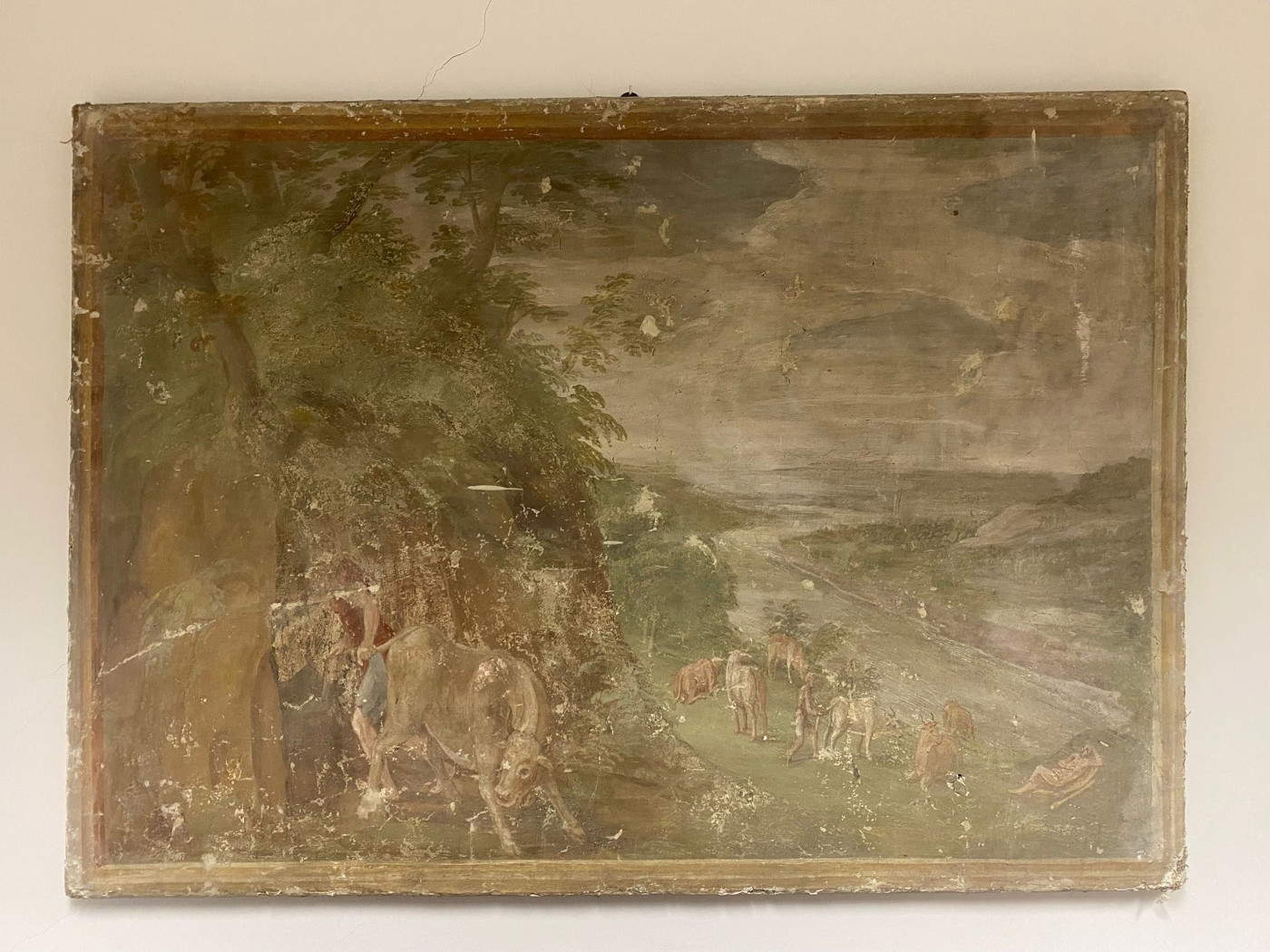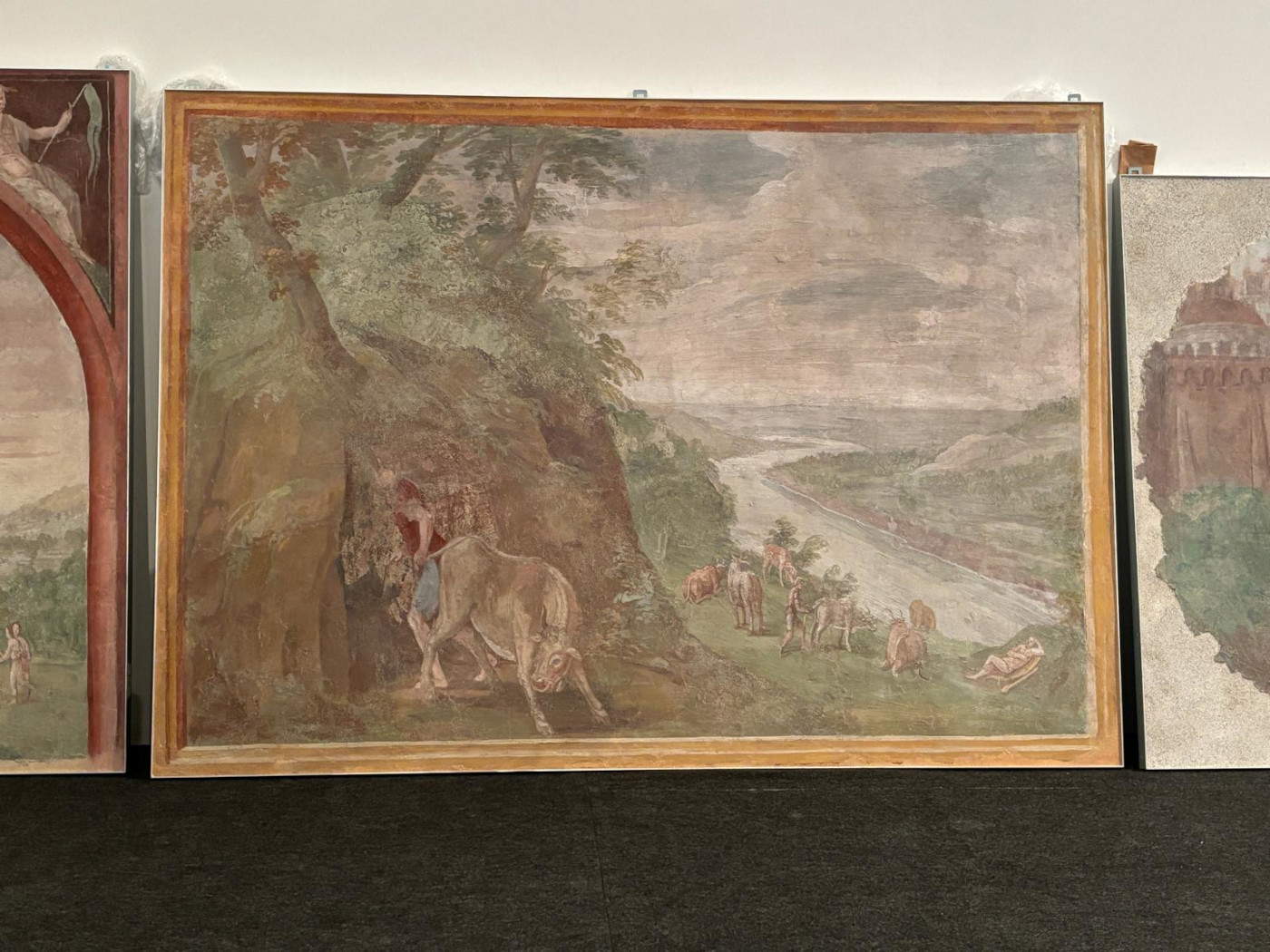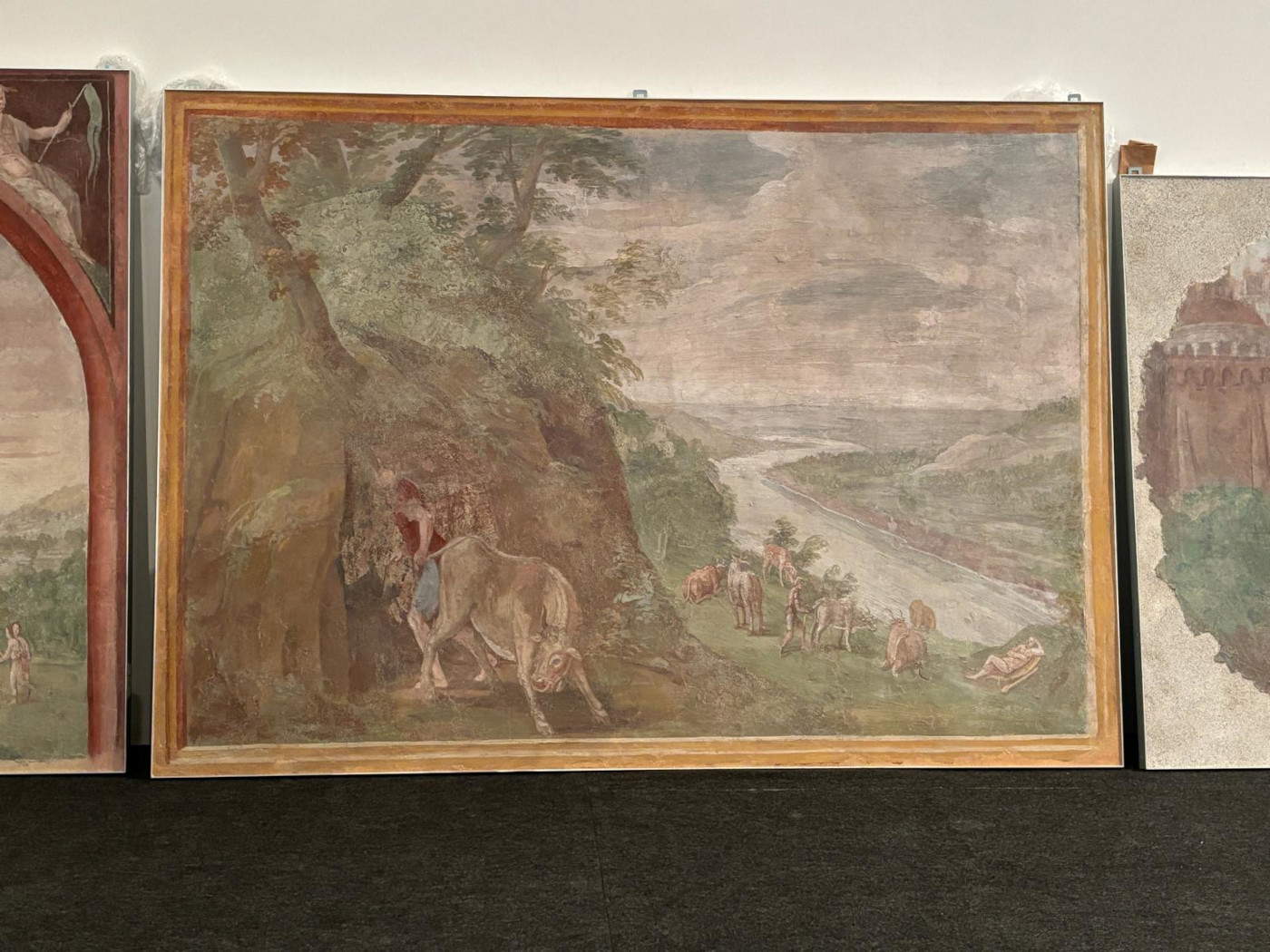Four frescoes in Palazzo Venezia restored thanks to a project sponsored by Hermès
The VIVE-Vittoriano and Palazzo Venezia, in collaboration with Hermès Italia, present the restoration of four 16th-century frescoes preserved in Palazzo Venezia, as part of the Grand Tour of Frescoes, a project promoted by Hermès Italia for the protection of historical and artistic heritage in several Italian cities. Launched in Padua in 2021 and passed through Naples, Rome, Bologna and Rome again, this intervention responds to the shared desire to preserve and make accessible works of historical value, in line with Hermès Italia’s commitment to restoration.
Conducted by expert restorers led by Luca Pantone, Technical Restoration Director of Pantone Restauri, the intervention restored legibility to the four frescoes, thus enabling new studies on the subject, provenance and author.
The Grand Tour of the Frescoes is part of a larger program of “beauty education” aimed at the entire maison. During the stages of the Grand Tour, in fact, some employees of Hermès Italy and the international subsidiaries participated in experimental workshops on painting technique and restoration, visited the Botanical Garden of the cities to discover the dyeing flowers still used today in art and in fabric dyeing, and delved into the technique used to create a fresco and to carry out a restoration on site. Participants on the Grand Tour saw initial diagnostic investigations of the state of the works performed and outlined the stages of intervention. This initiative, which will touch Turin and Florence in 2025, is part of a context of sustainability and preservation of the artistic and cultural heritage, in line with the goals of the UN 2030 Agenda for Sustainable and Inclusive Cities, highlighting the growing role of public-private collaboration in the enhancement of art as a common good.
"Art should be cherished and supported. With the Grand Tour of Frescoes we want to stimulate awareness of being part of an economy of beauty," explains Francesca di Carrobio, CEO of Hermès Italy and Greece. “Hermès Italia feels the need for an action that aims to create a new active and concrete social responsibility on the part of citizens, and therefore of the company. We want to be leading actors in targeted and highly formative actions that educate to an openness to the world, to the passing on of manual skills and expertise.” “We chose the fresco because it is very close to the theme of illustration, so dear to Hermès,” added Francesca di Carrobio. “Our silk bobs tell a story and represent their era, just like the frescoes.”
The restoration in Padua focused on Jacopo da Montagnana’s The Annunciation of the Virgin Mary with the Archangel Gabriel, in the porticoes of Palazzo Angeli in Piazza Prato della Valle, while the Naples intervention involved Antonio Solario’s Miracle of the Sieve, in the Platano cloister of the Naples State Archives, part of a cycle of frescoes entitled Stories from the Life of St. Benedict, dating from the 16th century.
The first restoration in Rome involved the fresco depicting St. Francesca Romana with the angel and St. Benedict flanking the Madonna and Child, which is located on the exterior facade of the Oblate Monastery of St. Francesca Romana, and that in Bologna the seventeenth-century fresco by an unknown author depicting the Madonna and Child on the vault of the east arch of the courtyard of the Palazzo d’Accursio.


 |
| Four frescoes in Palazzo Venezia restored thanks to a project sponsored by Hermès |
Warning: the translation into English of the original Italian article was created using automatic tools. We undertake to review all articles, but we do not guarantee the total absence of inaccuracies in the translation due to the program. You can find the original by clicking on the ITA button. If you find any mistake,please contact us.




























